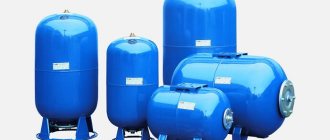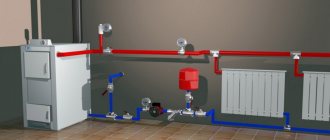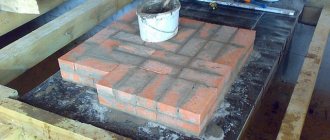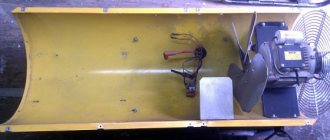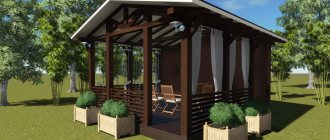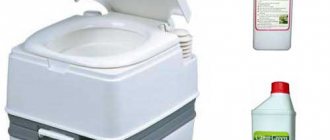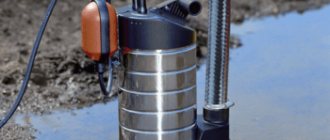Living in many sparsely populated areas and country houses is complicated by the lack of running water. Where water supply is limited to a well or water intake from a well, you can organize a full-fledged water supply for your home. A compact domestic pumping station connected to the pipelines will continuously supply drinking water.
What is a pumping station for a residential building
This is a compact device that, through automatic control, ensures the operation of an autonomous water supply in a private home.
The pumping station includes:
- suction pump;
- pressure tank;
- pressure switch;
- pressure gauge
It can be installed next to the well:
- in the basement;
- in a specially designated room;
- in mine.
High-quality equipment does not require special maintenance and is reliable in operation.
Why do you need a pumping station?
Installing a household pumping station in cottages, country houses and country houses that use water from their own wells, wells and other sources, transfers water consumption to a higher level.
It becomes possible to have an autonomous water supply, which will increase the comfort of living. Conditions are created for connecting plumbing cabins, washing machines and dishwashers.
Principle of operation
The operation of the pumping station is carried out using a pump, a hydraulic accumulator and an automation system that regulates pressure. When the unit starts up, water begins to be pumped into the pressure tank (hydraulic accumulator) and further through the pipeline.
When the upper pressure limit is reached, the pump is switched off. Next, the flow of water to the consumer is carried out due to the pressure in the accumulator, until it reaches the lower limit. Then the pump starts working again.
This ensures a constant supply of water. The pressure switch that reacts to changes is adjusted at the factory. The pressure value is 2 bar to start the pump and 3 bar to stop it. Control is carried out using a pressure gauge.
Recommendations from experts
When choosing a pump to supply water from a well to a house, you must also take into account the parameters of the water supply source, which, in particular, include:
- the total depth of the underground source, characterizing the distance from the surface of the earth to its bottom;
- the static level of the well, which is the distance from the surface of the earth to the water surface in an underground source (it is quite easy to determine both the depth and the static level of the well using a cord with a weight attached to its lower end);
- dynamic water level in a well, which is also called the flow rate of an underground source (this parameter indicates the intensity with which water pumped from the well shaft arrives again; in wells characterized by high flow rates, the difference between static and dynamic water levels is very insignificant );
- cross-sectional dimensions of the well shaft, which must be known in order to calculate the volume of water in the source as accurately as possible.
How to choose a pumping station
Provided that the pumping unit is chosen correctly, an autonomous water supply for a country house or cottage will be ensured, fully meeting consumer demand.
To do this, it is necessary to determine the main characteristics of the future station:
- suction depth;
- performance;
- power;
- accumulator volume.
Some approximate measurements and calculations that you can do yourself will help:
- The depth from which water is to be pumped.
- Distance from the source to water intake points.
- Average water flow from all points simultaneously. Provided that water consumption through the tap is about 4 l/min and 10 - 12 l/min when using a shower, you can calculate the approximate one-time water consumption by all consumers per hour. This indicator will correspond to the productivity of the station.
Pumping station power
Taking into account the daily need for water, it is necessary to select the power of the pumping station.
This indicator will be influenced by:
- height of water rise;
- distance of the unit from the well;
- productivity of the water intake source.
Among household installations, the power is 0.6 - 1.5 kW. From them you can choose the best option without overpaying.
The shorter the distance from the well and the depth of the aquifer, the less power is required for water supply.
Station performance
The amount of water that the unit is capable of dispensing into the water supply system of a house per hour is the productivity of the station.
It is indicated in the technical passport attached to the product. The productivity of domestic installations for home and garden ranges between 2000 - 6000 l/h.
If a large consumption of water is not expected, then you should pay attention to mini-installations.
Storage tank volume
When choosing a pumping station for your home, you should pay attention to the volume of the storage tank. It depends on the amount of water consumed and must ensure water supply during a power outage.
The tank volume can be from 8 l to 100 l.
Protection against dry running and overheating
Water supply units that are protected against overheating and dry running are distinguished by their impeccable operation. The system automatically turns off when there is no water in the well, protecting the electric motor from overheating.
This type of protection extends the life of the pumping station and increases the cost.
Control methods
- Automatic control method. When the upper and lower pressure limits are reached, a special relay turns the pump on or off.
- Manual.
- Remote.
Boost pump
Why you need a booster pump to supply water to your home is easy to guess from its name: it increases the water pressure.
A familiar problem, isn't it?
Excessively low pressure can be caused by:
- Uneven terrain. In a cottage located on a hill, the water pressure will be lower than in the same cottage at the bottom of the slope;
- A large number of consumers connected to the main water supply;
- Overgrowing of a steel pipeline with deposits and rust.
Typical condition of a steel water pipe
Device and characteristics
Here is a description of a completely typical booster pump, taken from the website of a widely known online store in Ukraine:
| Parameter | Meaning |
| Functions | Increasing the pressure of water and other non-aggressive liquids with a mineralization of no more than 1500 g/m3 |
| Acceptable particle size | No more than 0.05 mm |
| Maximum water and ambient temperature | 40°C |
| Allowable inlet water pressure | 0.3-6 kgf/cm2 |
| Working chamber body material | Brass |
| Impeller material | Brass |
| Impeller type | Vortex |
| Control | Flow sensor |
| Performance | 16 l/min |
| Connection thread size | DN15 (1/2 inch) |
Pressure booster pump
We emphasize: a booster pump for home water supply will not provide you with water if it does not reach your home. For its operation, excess pressure in the water supply is required, albeit small.
Connection diagram
The pump is installed at the water supply inlet of the cottage. It is advisable to install taps before and after it, allowing you to remove the device for repair or maintenance without completely draining the water supply.
In addition, a coarse filter in front of the pump is useful: it will protect the impeller from contact with sand and scale, which often enter the main water supply during repair work.
Connection diagram for booster pump
Manufacturers of pumping stations
Among the large selection of pumping equipment, Russian consumers trust more:
- Italian installations Marina, Pedrollo;
- German brands Karcher, Wilo;
- Russian units Gileks.
Powerful Italian Marina pumping stations are designed to lift water from a depth of up to 25 m. The cast-iron body allows the equipment to be operated in any conditions. The automatic operating mode of the station ensures a constant level of pressure in the water supply system.
The installation capacity of 2400 l/h with a power of 1.1 kW is suitable for supplying drinking water and watering the site.
The Pedrollo household station is a reliable and productive appliance. The installation pumps water from a depth of 9 - 30 m. Relatively low electricity consumption and productivity from 2400 to 9600 l/h create conditions for providing a water supply system for a private house, cottage, or summer house.
Tank options from 24 to 60 liters are designed for different amounts of water consumption. Unit power 0.85 – 1.3 kW
German pumping stations from Karcher are high-quality equipment for organizing water supply for a country house, cottage or summer house. The installation operates automatically and does not require additional maintenance. The package includes electrical equipment with reduced energy consumption.
Storage tanks with a capacity of 18 - 40 liters are made of steel. The 0.95 kW installation is designed for a capacity of 3800 l/h.
Wilo has been producing pumping equipment for over a century. High quality of products is achieved by using advanced technologies. Household pumping stations of this brand are among the most popular among consumers.
Noted:
- uninterrupted operation;
- reliability;
- ease of use.
The unit is protected against dry running, overheating, and condensation. The stations are produced with a power from 0.55 kW to 1.6 kW. You can select units with a storage tank volume from 8 liters to 60 liters. The products are fully equipped and ready for use.
Dzhileks pumping stations (Russia) are closest to the conditions of use for the Russian consumer. The device has automatic control that maintains the required pressure in the system.
Various units with a capacity from 2700 l/h to 4200 l/h and a power of 0.50 - 1.1 kW are produced for the Russian market. The volume of the storage tank can be from 24 l to 50 l.
The body is made of plastic or carbon steel, depending on the model. The pressure in the system is checked using the pressure gauge provided for this purpose. Gilex products are reliable and easy to use.
The best budget models
Budget model from a Chinese manufacturer
The Chinese manufacturer, which produces pumping units under the Kalibr brand, is introducing the SVD-160/1.5 model to the domestic market, which is distinguished by its compact dimensions, practicality, and good performance. The capabilities of such equipment are enough to provide a private house or cottage, where from one to three people live, with water for household needs and for the operation of household appliances.
All tables from the text
Table 1. Parameters of the Kalibr pumping station SVD-160/1.5
The advantages of the installation in question for a summer residence include:
- compact dimensions;
- decent parameters for suction and generated pressure;
- the presence of protection against idle operation;
- presence of a check valve in the basic configuration;
- no emergency overheating;
- reliable housing design;
- durability of operation;
- low price.
Pumping station "Caliber" SVD-160/1.5
Among the disadvantages of such installations, it should be noted that they cannot be classified as low-noise pumping stations for summer cottages, so it is better to install them in separate rooms. In addition, this model has a rather small accumulator tank, and there are also individual problems with starting.
Based on user reviews, such an installation is worth buying for those who cannot allocate a lot of money to purchase pumping equipment for their dacha.
What to look for when choosing
When choosing a pumping station, you need to take into account several important points that will affect the operation of the device:
- Manufacturer. Products from manufacturers who have positively proven themselves in the market will not create problems during operation.
- Material of manufacture. Units made using carbon steel have a longer service life than plastic ones.
- Compliance of technical characteristics with the required parameters. Productivity, aquifer depth, storage tank volume.
- Dry running and overheating protection system. The presence of protection will extend the service life.
Advantages and disadvantages
Pumping stations fully power the autonomous water supply system. They not only pump water, but also maintain pressure, creating comfortable conditions for domestic use.
Among the advantages are noted:
- presence of a dry running protection system;
- water supply in the storage tank;
- use of materials with anti-corrosion properties;
- universal application;
- the unit is assembled and ready for use;
- reduced noise during operation;
- economical energy consumption;
- long service life.
High-quality installations do not require additional maintenance costs and are easy to operate.
Like any equipment, pumping stations have disadvantages:
- Limitation on suction depth. Most installations are designed for 8 - 9 m.
- Sensitivity to the presence of sand particles and other contaminants. In these cases, a filter must be installed.
- Putting the unit into operation requires filling the hose with water and setting the pressure switch.
- Control over pressure level.
Overheating and dry running protection
Devices designed to supply water, which have protection against dry running and overheating, function flawlessly. When there is no water in the source, the system automatically turns off, as a result of which the electric motor does not overheat. This method of protection extends the life of a home water supply station, but at the same time increases its cost.
Installation of a pumping station
The installation is supplied for sale fully assembled and ready for operation. The consumer needs to connect the unit to the suction pipeline and water supply system. It is recommended to first install a check valve on the suction pipe to retain water when disconnected from the power supply. If there are mechanical inclusions, a mesh filter is installed.
It is recommended to install the unit using shock-absorbing material to reduce the vibration created during pump operation. The installation must be equipped with grounding. Having fully connected the pumping station to the water supply system, it is necessary to fill the suction pipeline and the pump housing with water through the filling plug.
After checking the tightness of the connection points, it is necessary to pump up the pressure to the level recommended by the manufacturer through a special fitting. After this, the unit can be connected to the electrical network.
It should be taken into account that in winter the room must be heated. If the equipment is installed in a shaft, then the hatch cover must be double and have insulation.
Circulation pump
In this case, the pump installed for the hot water supply of the house ensures continuous circulation of water in the circuit. Why is this necessary?
The DHW circulation system has two advantages over a dead-end system:
- It is capable of providing instantaneous supply of heated water to any water supply point. In a dead-end system, water has to be drained for a long time before it is heated;
- It ensures round-the-clock operation of water heated towel rails. In a dead-end system, they heat up only when hot water is consumed.
The operation of the heated towel rail is ensured by continuous circulation of water
However: if the first problem is not relevant for you due to the short length of the water supply system, it is easier to replace the water heated towel rail with an electric one. It consumes only 40-100 watts - about the same as a circulation pump.
The photo shows an electric heated towel rail in the author’s house. Power consumption - 40 W
Device and characteristics
In this case, the Grundfos circulation pump for home water supply - model UPS25-60 180 - will serve as a model for our study.
Our hero
| Parameter | Meaning |
| Type | Centrifugal, wet rotor |
| Power | 50-60 W |
| Performance adjustment | Stepped, 3 speeds |
| Allowable pressure | 10 kgf/cm2 |
| Maximum head | 6 meters |
| Housing material | Cast iron |
| Case length | 180 mm |
| Thread diameter | DN15 (1/2 inch) |
Connection diagram
The pump is installed in a gap in a closed DHW circuit. And in this case, it is advisable to provide a couple of taps to turn it off without draining the water supply.
In a circuit with an autonomous water heater, water supply can be organized according to one of two schemes:
- With connection to two water heater pipes (if operation in a circulating water supply system is provided by its manufacturer);
Scheme with an indirect heating boiler equipped with an additional pipe for recirculation
- Using a thermo-mixing unit that stabilizes the water temperature in a closed circuit. In this case, any water heater with two pipes can be used.
Most boilers have only two connection pipes
DHW circuit with a boiler without outlet for recirculation and a thermal mixer
Useful tips before purchasing
- Decide for what purpose the pumping station is being purchased. The required power, performance, and cost will depend on this.
- Perform approximate calculations necessary for comparison with the technical characteristics of the equipment.
- Choose a manufacturer based on recommendations from experts and consumer reviews.
- It should be taken into account that the higher cost of installation in a metal case compared to plastic will be paid off by a long service life and savings on maintenance.
The pumping station will provide water supply to a private home for a long time if it is correctly installed and operated according to the instructions.
HDPE pipes - an alternative to steel mains
Let's take a closer look at the pipes connecting the submersible equipment and the surface centrifugal pump.
When choosing pipes for external water supply, you need to focus on factors such as:
- convenient transportation;
- easy installation that does not require highly qualified knowledge;
- strength, abrasion resistance;
- elasticity and deformation of shape without loss of functional qualities;
- non-toxic, safe for moving drinking water.
All of the above requirements are met by pipes made of low-density polyethylene. Unlike metal analogues, they do not deteriorate due to corrosion over time. The average service life of HDPE pipes is 50 years.
One of the advantages of HDPE pipes is the availability of a set of various fittings of a suitable standard (couplings, plugs, adapters) for quick and easy installation
We recommend purchasing only high-quality, labeled products with the following data indicated on the outside:
- variety;
- external diameter;
- wall thickness;
- nominal and maximum pressure.
On the pipe, which is necessary for laying the pressure line from the well, it is possible to indicate the purpose - “drinking”. For use in the country, products with a diameter of 32 mm and a wall thickness of 2.4 mm are suitable. The blue stripe indicates that the pipes are intended for pumping water (yellow – for transporting gas).
A water supply network of complex design has branches (for example, to ensure watering of a garden or water supply to a bathhouse). To monitor pipe connection points, inspection wells made of brick, concrete or plastic are installed
